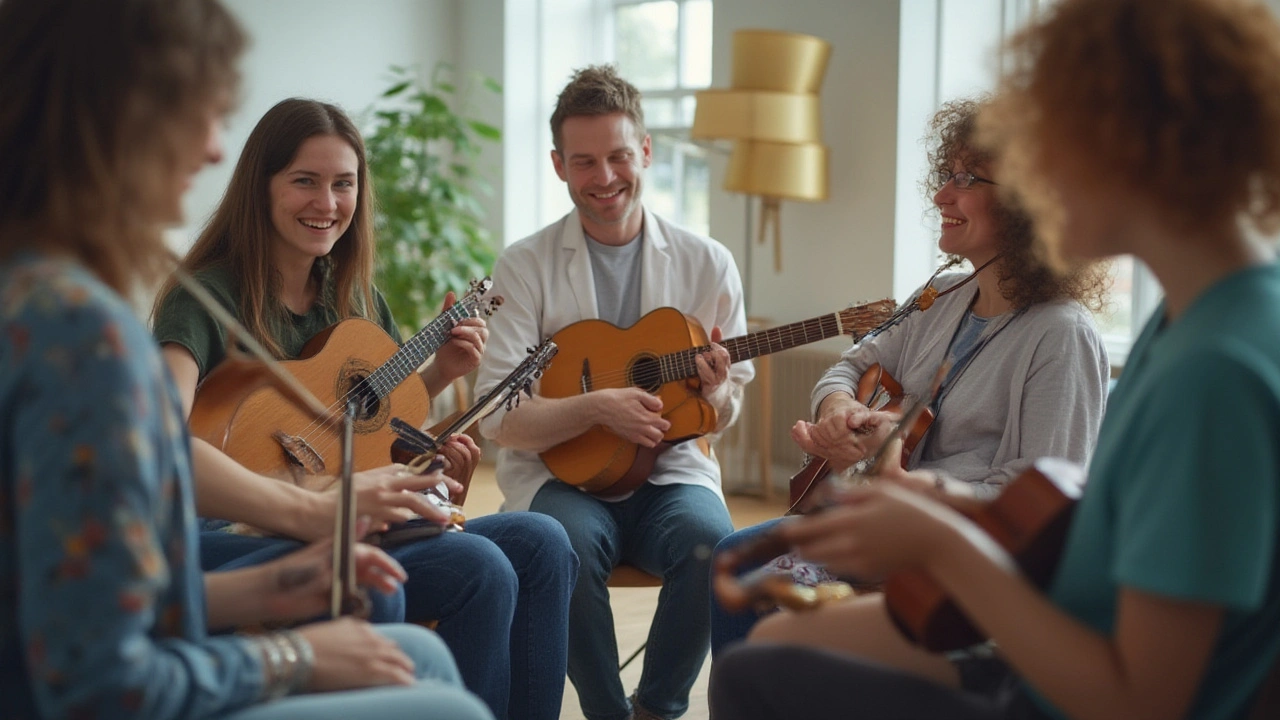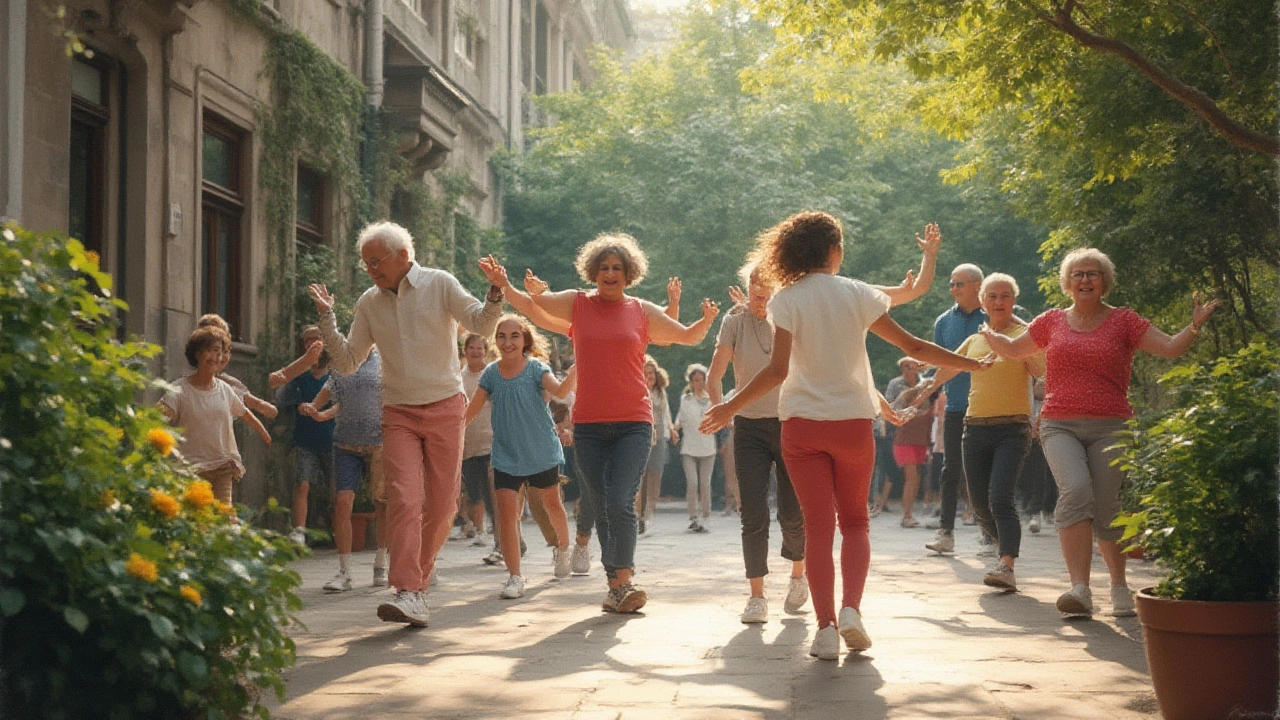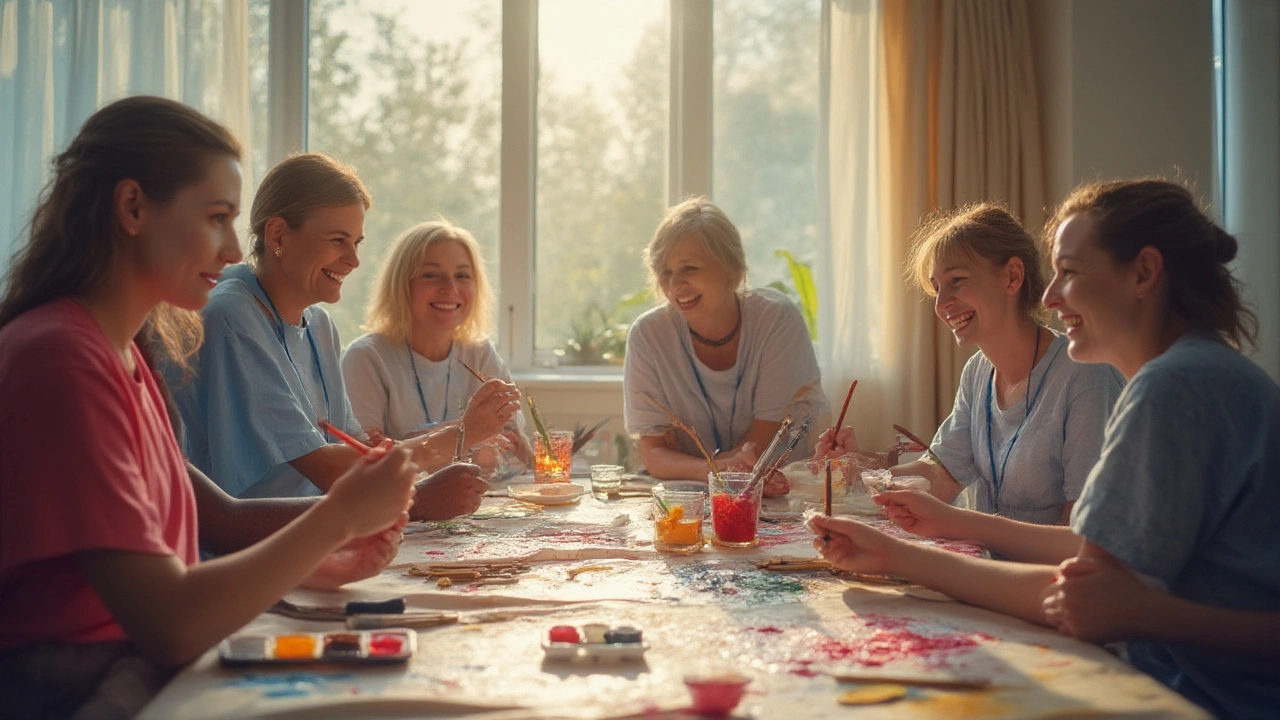You’d probably expect a hospital ward to smell like antiseptic, not acrylic paint. But look beyond the curtain, and you might find patients hunched over sketchbooks, clay, or drums instead of paperwork. This isn’t some experiment; it’s how creative arts therapies are quietly transforming medicine. Doctors once saw art as a pleasant distraction. Now they’re prescribing it. Why? The shift cracks open a big debate about what really heals us. Pills and surgery still save lives, but evidence keeps piling up—engaging in creativity rewires the brain, reduces pain, and eases struggles where traditional medicine falls flat.
Breaking Down Creative Arts Therapies: What They Are and Why They Work
Creative arts therapies aren’t your average art class. Trained therapists use tools like painting, drawing, music, dance, drama, and even poetry for one core reason: to heal the mind and body where words and pills can’t reach. Art therapy, music therapy, dance/movement therapy, and drama therapy each have their unique methods, but together they offer a new way to crack open complex feelings, trauma, or physical challenges.
Medical journals and psychiatric studies have actually tracked this stuff for decades. Art therapy gained traction in the 1940s among veterans coping with World War II trauma. Now, the American Art Therapy Association lists over 5,000 certified art therapists in the U.S. alone. What’s changed? Researchers have put brain scans to work, confirming that making art lights up areas involved in reward, stress relief, and emotion regulation.
Take for example, a 2023 Stanford study where stroke survivors trying art therapy boosted their fine motor skills and reported fewer depressive symptoms versus those in support-only groups. Music therapy? Hospitals like Boston’s Children’s use certified therapists to help kids recover faster—and with fewer complications—after surgery. Drumming sessions help regulate heart rate, while songwriting helps teenagers express grief they can’t yet verbalize. The point isn’t to create masterpieces. It’s about the process, the focus, and the freedom to express what can’t be spoken.
Creative arts therapies aren’t one-size-fits-all. Someone grappling with PTSD might rediscover trust through guided movement. A cancer patient might sketch images instead of describing fear. Therapists tailor sessions to meet each person’s unique needs, using evidence-based techniques like mindfulness drawing or improvisational music. This flexibility—combining science with creativity—explains why so many doctors now see it as essential, not just a novelty.
While art therapy sessions range from group to one-on-one, a lot happens outside the therapist’s office too. Many hospitals now feature healing arts studios, visiting artists, or programs that let patients create at the bedside. Even simple steps, like providing colored pencils and paper on a pediatric ward, can spark surprisingly deep conversations.
The Science: How Creativity Heals the Brain and Body
Ever wondered why drawing a doodle or singing in the shower makes you feel better? That relief isn’t just in your head. MRI scans show creative activities trigger a surge in dopamine—the brain’s feel-good chemical. When doctors prescribe creative arts therapies, they’re not just hoping for distraction; they’re actually shifting the brain’s chemistry.
Let’s make this real. In a 2022 systematic review published in the journal "Frontiers in Psychology," researchers analyzed 39 clinical trials and saw that art-making can lower levels of the stress hormone cortisol while improving resilience. One surprising find? Just 45 minutes of art therapy reduced participants’ anxiety by over 20% in hospital settings.
Here’s a quick breakdown of measurable effects from various studies:
| Therapy Type | Patient Group | Key Benefits | Study Year |
|---|---|---|---|
| Art Therapy | Cancer Patients | Lower anxiety, improved quality of life | 2023 |
| Music Therapy | Cardiac Surgery Patients | Lower heart rate, reduced pain | 2022 |
| Dance Movement Therapy | Parkinson’s Disease | Better balance, less depression | 2021 |
| Drama Therapy | Teens with Social Anxiety | Greater confidence, improved participation | 2022 |
So what’s going on in the brain? Scientists at Drexel University used EEG scans and found that just making basic art—no talent required—dials down activity in the amygdala, the “fight-or-flight” center. At the same time, creative work lights up the prefrontal cortex, responsible for planning and emotion regulation. You’re literally rewiring your stress response. Not surprisingly, many people report feeling less judged, more present, and more resilient after just a few sessions.
Doctors are now exploring blending creative arts therapies with traditional treatments like cognitive behavioral therapy (CBT). This isn’t about choosing between art or medicine: the two work in parallel. For patients who find it tough to talk about trauma or pain, art offers another language—one that bypasses the usual mental roadblocks. No surprise, chronic pain clinics and oncology wards are some of the fastest adopters.
Creative arts therapies also come with pretty much zero side effects. Unlike some medications that leave you groggy, creative sessions often leave patients energized or relaxed. Plus, for patients fearful of medical procedures, a session of painting or guided drumming can reduce the need for extra painkillers or sedatives.

From Children to Seniors: Who Benefits From Creative Arts Therapies?
All kinds of folks get something unique from creative arts therapies—kids, teens, adults, and seniors. Even if you’re not someone who considers themselves “artistic,” these therapies don’t demand talent. They thrive on honesty, openness, connection, and play, which everybody can tap into when the setting feels safe.
Kids and teens may benefit the most, since they often don’t have the vocabulary or self-awareness to hash out what’s going wrong. In children’s hospitals, therapists use dolls, sand trays, and music to help young patients manage fear, grief, boredom, or pain. Even coloring books and simple rhythm games can interrupt the downward spiral of anxiety or sadness.
For veterans and trauma survivors, creative arts therapies make it safer to revisit tough memories, gradually. Drama therapy, for example, helps veterans “try on” different roles, reframe their stories, and reconnect with identity, sometimes after years of internal silence. The U.S. Department of Veterans Affairs offers art and music therapy as a standard option in almost every major rehabilitation center now.
Older adults also see remarkable gains—especially those battling dementia or Alzheimer’s. Singing, painting, or dance can stir up forgotten memories, boost focus, and decrease the sense of isolation. A 2023 data review from the University of Utah revealed that after just eight weeks of group art therapy, seniors with early-stage dementia posted better cognitive test results, smiled more, and required less pharmaceutical intervention.
Group creative arts sessions break down barriers, especially for people who feel anxious, different, or alone. Hospitals and clinics that run open studio times or weekly music circles report more meaningful staff-patient connections and even quicker recoveries. Creativity helps people take back agency over their health journey, especially when every day can feel like a loss of control.
Even remote and rural clinics—which might not staff full-time arts therapists—get creative. Nurses and doctors can take short video-based training and guide basic activities at bedside or in the waiting room. With a few supplies, these micro-interventions build bridges through any language or cultural barrier.
Doctors and Hospitals: Why Attitudes are Changing
The days when a doctor would raise an eyebrow at a paintbrush in a medical setting are fading fast. Today’s physicians want treatments that actually work—with concrete evidence. That’s why creative arts therapies are jumping from quirky add-ons to must-have parts of modern care.
How? Medical schools now invite art therapists to teach classes on empathy, observation, and patient communication. At Mount Sinai in New York and Cleveland Clinic in Ohio, physicians-in-training do rotations in hospital-based art, music, or movement therapy units. They see firsthand how these sessions calm agitated patients, shorten hospital stays, and often succeed where meds just don’t.
The biggest reason: burnout is rampant among healthcare workers, now more than ever. Doctors are learning that offering creative outlets isn’t just good for patients—it’s good for their own well-being. Some hospitals now host painting or pottery workshops for staff. When physicians get creative themselves, they feel the stress melt, and that empathy translates right back into patient care.
Health insurance providers are taking notice too. In the U.S., Medicaid now covers some creative arts therapies for behavioral and mental health in select states. The U.K.’s National Health Service recently launched the “Social Prescribing” initiative, where general practitioners write referrals for art or music therapy instead of just medication.
Of course, there’s still pushback. Some want bigger, longer-term studies showing that creative therapies outperform traditional drugs or talk therapy. But time and again, the outcomes—faster recoveries, lower medication costs, and happier patients—speak loudly. Doctors are coming around, especially as younger, more holistic-minded professionals enter the field. The real magic happens when medical knowledge pairs up with creativity, breaking the mold of what health care usually looks like.

Simple Ways Anyone Can Start: Tips from The Therapists
You don’t have to wait for a doctor’s order to feel some of these benefits yourself. Want to give creative arts therapy a shot at home or in your community? Therapists offer simple, proven starter ideas that are easy to adapt—zero experience or fancy supplies needed.
- Art for stress relief: Set a timer for 10 minutes and doodle, scribble, or color with whatever you have. Focus on the movement and color, not on the result.
- Music for emotion regulation: Build a playlist that matches your mood. Try layering in songs that shift your emotional tone gradually from anxious to calm, or sad to hopeful.
- Dance and movement for energy: Close your eyes and move to your favorite song for even two minutes. Notice any sensations or emotions that come up. There’s no right or wrong way—just movement.
- Journaling with a twist: Write a letter to your “future self,” or draw a comic strip about your day’s highs and lows. This tricks your brain into reframing stress or overwhelm.
- Group art games for connection: Host a virtual or in-person “pass the drawing” game, where each person adds something to a collective piece. The focus here is fun—not perfection.
You can also try short online workshops or local classes—look for certified art, music, drama, or dance/movement therapists in your area through organizations like the American Art Therapy Association or the International Expressive Arts Therapy Association.
Even occasional creative practice can lower your baseline stress, boost self-esteem, and make medical treatments feel less scary. If you or a loved one are facing something tough—illness, big changes, anxiety—these simple activities can tilt the scales in your favor. The most important thing is to start. Forget what you learned in school about needing to “be good at art.” Healing happens in the doing, not the finished product.
For doctors, the message is clear: medicine and art aren’t on opposite sides. Bringing creativity into care isn’t just compassionate—it’s a practical, research-backed way to help people feel whole again. Whether you’re painting with patients or simply cranking up the radio, this creative revolution in health is only getting started.
